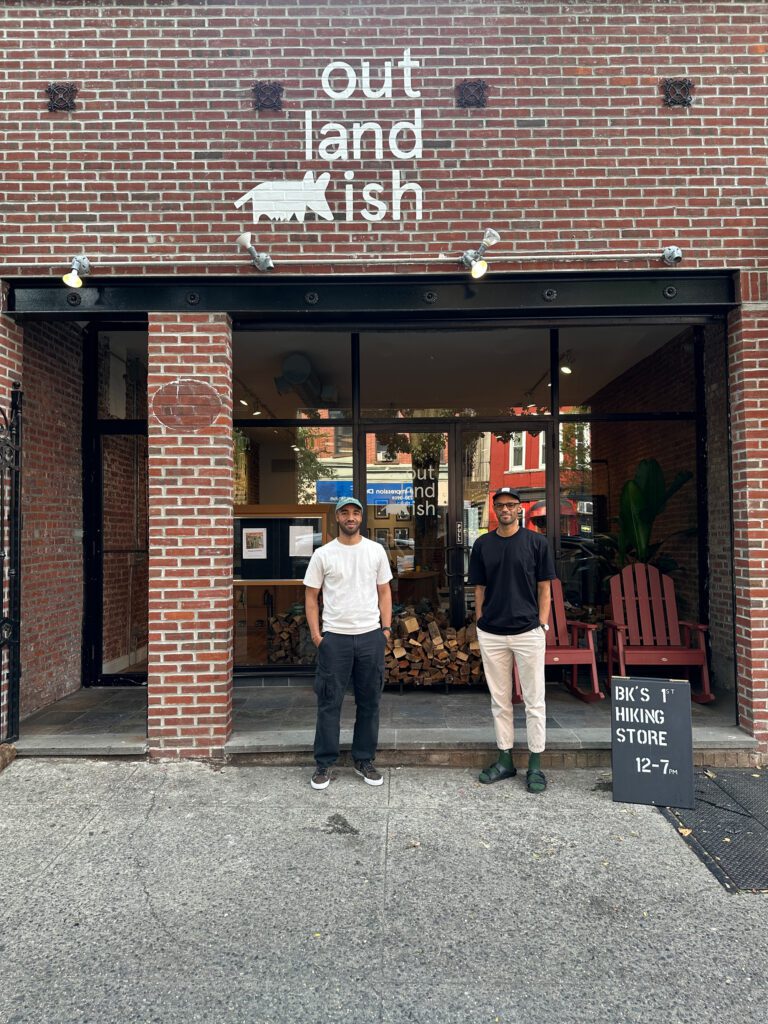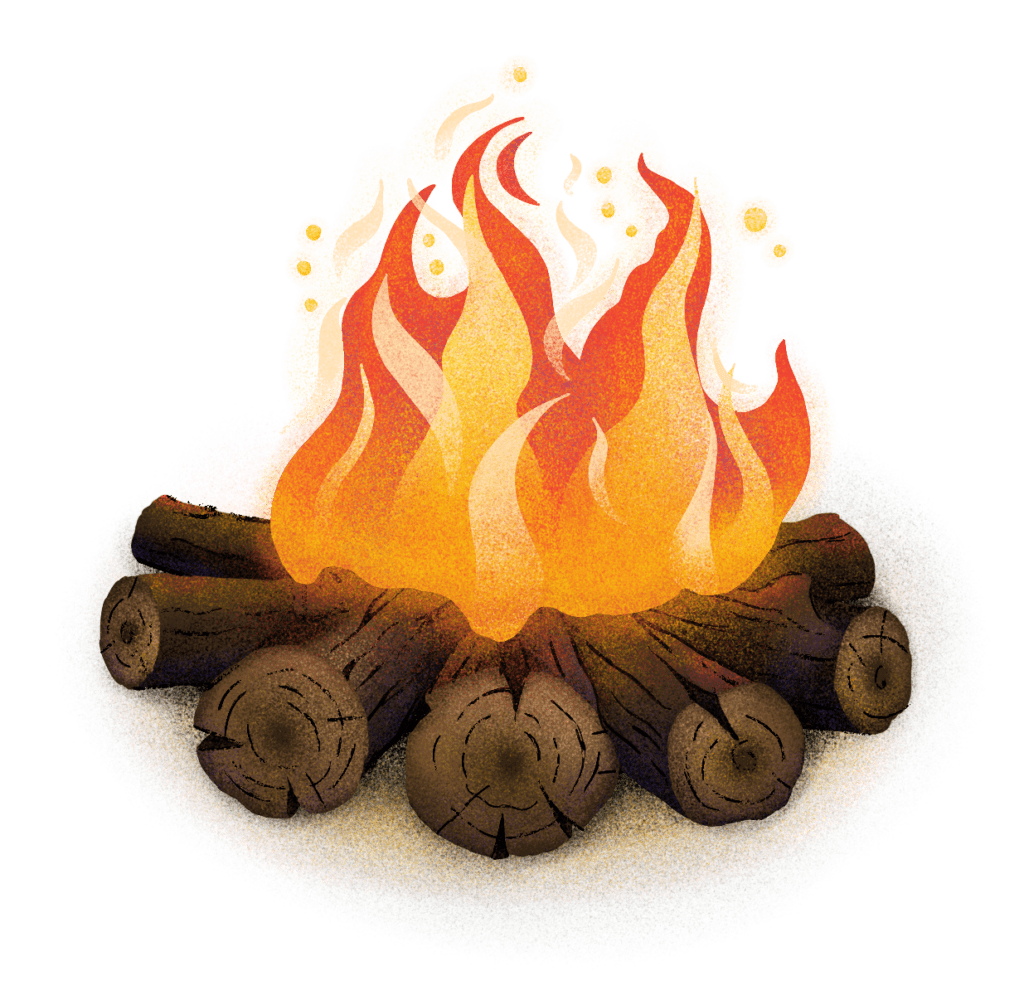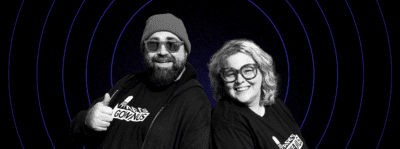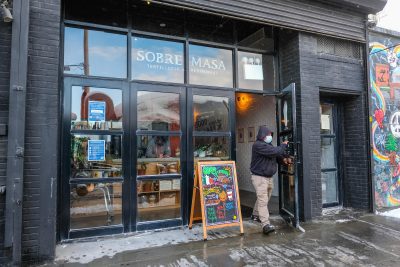Meet the entrepreneurs reclaiming the outdoors for people of color
Outlandish, one of a few of the country's Black-owned hiking stores, is making the outdoors accessible to everyone

Courtesy Outlandish
Benje Williams felt conflicted when he went on his first backpacking trip in 2021 with his dad.
On one hand, it was an amazing experience to share with his father, and he enjoyed the solitude of immersing himself in the wilderness of Sequoia National Park. On the other, they saw only two other people of color during the four-day trip.
“I was feeling visible in not great ways,” Williams says.
It’s not surprising that Williams couldn’t identify with the majority of his fellow hikers on trail: A 2018 survey by the National Park Service found that only 2 percent of its visitors were Black, while between 88 percent and 95 percent were white. Additionally, 79 percent of full- time National Park Service employees were white, while only 7 percent were Black.
Before his trip, though, Williams had been put at ease in a rather surprising place: the REI in Manhattan. Ken Bernard, who is also Black, helped outfit him. Williams says seeing someone who looked like him in a space traditionally occupied by white people instantly made him feel more comfortable.
“I was just really happy to see a Black dude at REI,” Williams says. “I wasn’t expecting that. I was like, ‘This is my first backpacking trip, I’ve never been backpacking, and I have a little bit of that impostor syndrome, like, do I belong backpacking?’ … It was just cool to see Ken there at REI and have that kind of comfort.”
Emboldened by the encounter, Bernard and Williams teamed up to open a hiking store that would not only create a safe space for Black hikers and campers but offer excursions inspired by the backpacking trips Williams took with his dad.
The result is Outlandish, which purports to be only the fourth Black-owned hiking store out of 4,700 across the country. Located at 722 Franklin Avenue in Crown Heights, Outlandish is a specialized gear shop with a larger mission: to introduce and reconnect people of color to the great outdoors.
Tackling racism one hike at a time
Since soft-launching in January, the store has held 13 sold-out group excursions — beginner hikes and trail runs marketed toward BIPOC enthusiasts — and has curated an inventory featuring numerous products from companies founded by people of color. A major pillar of the business so far has been challenging the notion that hiking isn’t a “Black activity.”
“I love when you get the skeptic into the store, especially a person of color,” Bernard says. “Because when you give them that proper invitation to what a proper hike looks like and who is out there and who should be out there, folks are more willing to step out of their comfort zone when they realize the safe spaces being created for them. So you have the chance to build community and meet like-minded folks.”
James Edward Mills, author of “The Adventure Gap: Changing the Face of the Outdoors,” says this type of representation is critical — and in short supply. For decades, outdoor magazines and catalogs were filled with white models. Plus, he says, disposable income and free time are necessary to even consider enjoying nature, which presents its own barriers, as Black Americans make 30 percent less than their white counterparts.
Mills, a lifelong outdoorsman who is himself Black, says having Black-owned stores like Outlandish — only the fourth in the nation, according to the Outlandish team, after Slim Pickins Outfitters in Stephensville, Texas, Intrinsic Provisions in Hingham, Massachusetts, and Wheelzup Adventures in Cumberland, Maryland — will help set a new paradigm of who belongs in the outdoors.
“To be able to see oneself as an active participant in these activities dispels your false belief that this isn’t for you,” Mills says. “We have the ability to have very real, very identifiable role models that we can relate to. If you can go into a store and see signs on the walls, and you can see pictures, and if you can see sales representatives, literature on the shelves, magazines on the racks that are reflective of your personal identity, it doesn’t seem like much of a stretch [to envision more people of color outdoors].”
Another way Bernard and Williams hope to make a mark is through the actual clothes they sell. Gorpcore — the trend that mixes street fashion with outdoor brands like Solomon, Arc’teryx and The North Face — is hugely popular in New York. (It takes its name from a colloquialism for trail mix: “good ol’ raisins and peanuts.”) Stocking the store with gear that proves you can look stylish in the outdoors and then bring it back to the city and actually use it instead of sticking it in a closet for nine months is another way the duo is finding budding outdoor enthusiasts.


“It feels like people of color especially want that,” Williams says. “We’ve had to wear this stiff shit that wasn’t necessarily designed for different types of body shapes, for example. It feels like people are asking for different things, it feels like designers are responding, brands are responding, a lot of it’s coming from smaller startups.”
Fostering community outdoors and in-store
The lack of racial diversity in the outdoors can be tracked all the way back to post–Civil War segregation, through the Jim Crow era — and on through today, given present economic, transportation, education, employment and housing inequalities, says Mills.
When President Woodrow Wilson signed the legislation establishing the National Park Service in 1916, it was part of a broader policy portfolio that injected all the racial segregation practices of the South into numerous government-backed initiatives. America’s national parks thus experienced the same constriction of Jim Crow segregation and racial discrimination as many other institutions throughout U.S. history.
“It’s under Wilson that we get the segregation of the armed forces, the U.S. Postal Service and the newly designated National Park Service,” Mills says. “Even though we have a long history of people of color being involved in the settling of the West, in the creation of the first national parks at Yosemite and Sequoia, patrol in Yellowstone in the 1890s, and serving in the First World War, by the time the National Park Service is created, those same people who did so much to create the national spaces that we enjoy today literally were not allowed to become park rangers as civilians.”
Between 1903 and 1906, for example, more than 400 members of the all-Black military unit known as the Buffalo Soldiers patrolled the newly designated national parks at Yosemite and Sequoia and, according to PBS, performed many of the same duties of today’s national park rangers. They were led by Captain Charles Young, the third Black soldier to graduate from West Point.
Stephen Bishop, meanwhile, was a former slave credited with discovering and exploring many caverns at Mammoth Caves in central Kentucky. He even led tourists on excursions though the area, where he created the first maps and named many of its features. This was before the Civil War, according to National Geographic.
But much of that history has been whitewashed away. Wilson’s administration ushered in an era where for many years campgrounds, hotels and modes of transportation were segregated, which not only discouraged people of color from feeling welcome in the national parks but in many cases prevented it altogether. Mills says the problem isn’t that Black people don’t think they belong in the outdoors; rather, it’s that for decades they have been told they don’t belong.
Williams and Bernard hope that Outlandish will help people of color see that they do belong in the outdoors. To do so, they placed an emphasis on fostering community both on the trail and in-store.
So far it’s working.
‘It’s just nice’
Crown Heights residents Tamim Abedin and Urvashi Pandya recently moved to Brooklyn from Atlanta for its diversity. They joined Outlandish and the Bronx- based gear company allmansright on a 3.2-mile hike through Prospect Park in July. As people who describe their relationship with the outdoors as “on and off,” the couple says having something like Outlandish in their neighborhood entices them to get into nature more while also making them feel more in tune with their community.
“A lot of the people we were hiking with were from Crown Heights,” Abedin says. “It’s just nice to have something for people of color in Crown Heights who enjoy the outdoors, even within the city … because not everyone can afford the time to go out of the city.”
Bernard and Williams plan on making the local community an integral part of the Outlandish experience. The 1,000-square-foot space hasn’t officially held its grand opening yet because the duo are still listening to neighbors and customers to figure out how they can best utilize their resources. From hosting events in their backyard to offering up the store after business hours, they want to become more than just a place where people come to buy a new pair of hiking boots.


“We exist in a space that has been essentially built up by the community,” Bernard says. “A New York woman-owned design team that designed the space, to our shelving hand designed by a Brooklyn lumber spot, Sawkill, to our cash wrap [check-out counter] that was designed by an artist here in Brooklyn. So the sense of community is essentially building our space out.”
The plan is to hard launch the store on September 22. In the meantime, Williams and Bernard are working on a line of Outlandish products — a running hat, a T-shirt, a stuff sack and a camping mug are already live, while another product is still in the works — after receiving an overwhelming amount of interest from customers.
“I really feel like there’s an existing community already,” says Williams. “And that we’ve been able to become a part of that community and maybe strengthen it in a way.”
This article originally appeared in the fall/winter 2023 issue of Brooklyn Magazine. Want it delivered to your door for a nominal fee (plus a free hat)? Click here to subscribe.
You might also like 


























